The stars were aligned such that we would be in Cusco just in time for the Inti Raymi, the Incan Sun Festival. We arrived at the Cusco airport and were immediately greeted with shops selling oxygen tanks, and for good reason, we'd soon come to discover.
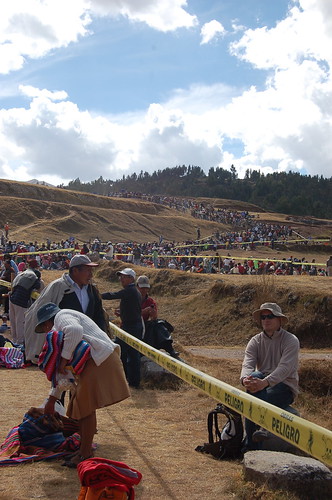
The arduous trail (of Hungry Hedonist's tears) up to Sacsayhuaman. Really should have bought those oxygen tanks.
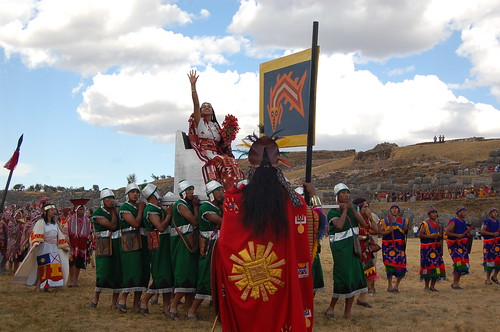
Front row seats at the festival, ballinnn
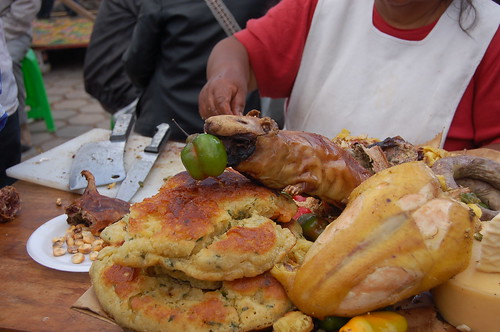
On our way down from the top, we found that many vendors had pragmatically set up stands for hungry passersby. This rat-like speciman is actually cuy, or guinea pig. It tastes like a tougher and gamier version of quail.
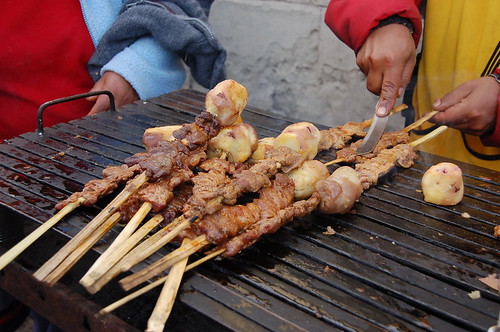
Mystery meat kebabs. Every country has its own.
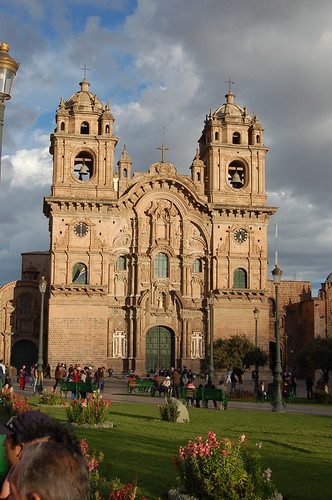
Plaza Mayor, Cusco
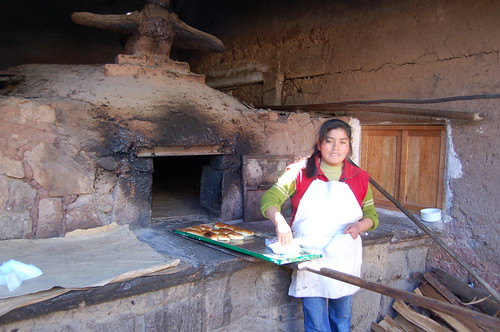
Guinea pig empanadas - elsewhere in the Sacred Valley. Curiously enough, the guinea pigs are right around the corner from the oven running around in their open air dens.
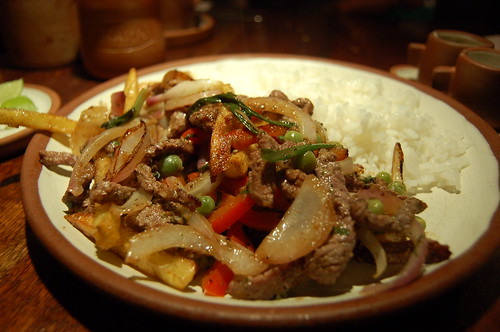
Lomo saltado at Pucara Restaurant; tender strips of sirloin with great homemade fries.
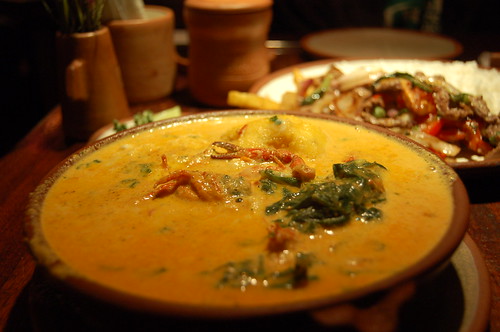
Chupe de Camarones (shrimp chowder) - another popular Peruvian entree
Machu Picchu
Given my propensity for the great outdoors, most people assume that I trekked the Inca trail to Machu Picchu. While that would have improved my street cred, we really took the train via PeruRail. It was pretty great: on our way back to Cusco, the train attendants initiated a fashion show utilizing the aisle as their runway. The pieces they modeled, consisting solely of alpaca wool sweaters, were pretty repetitive; nonetheless, it made for great sartorial entertainment.
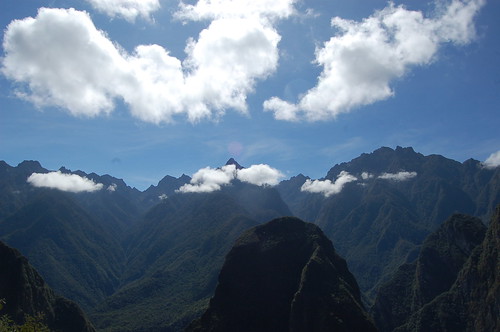
Eye level with the clouds. This was taken as we were winding around a mountain in a fast bus; we were opposed to any variation of trekking.
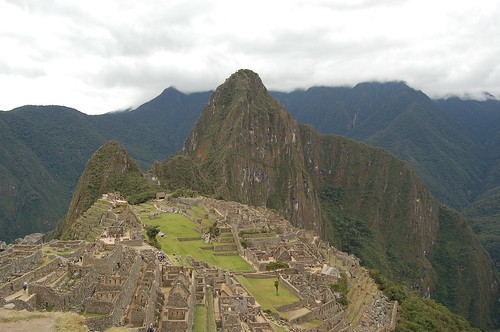
The postcard shot atop Machu Picchu
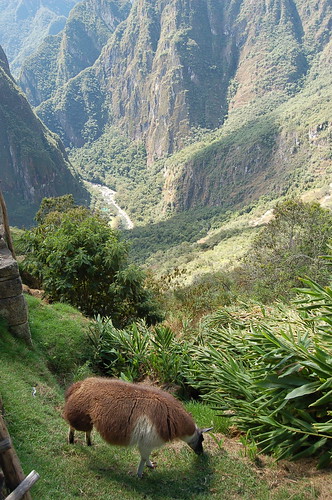
Apparently, alpacas are randomly inserted in the sites to make Machu Picchu more "authentic"
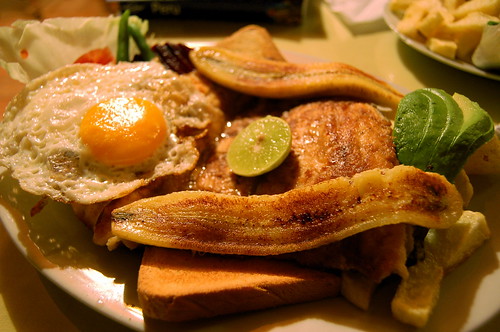
Bistek and pescado a lo pobre - In certain parts of the Andes, fish and other meats come with strips of banana and a fried egg
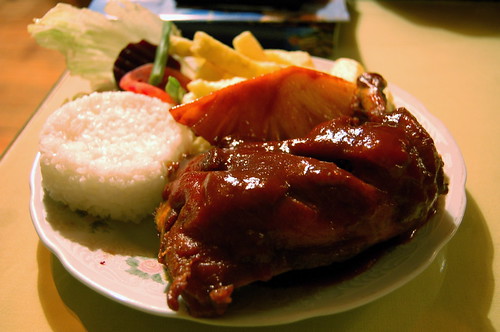
Pollo cola cola - chicken cooked in coke. Slightly sweet, acidic, smoky, with a good Coca-Cola kick, this was delectable. This goes down as another winning beverage/meat combination in the tradition of coffee-glazed spare ribs.
Previously: Lima
Next: Puno and Lake Titicaca

The arduous trail (of Hungry Hedonist's tears) up to Sacsayhuaman. Really should have bought those oxygen tanks.

Front row seats at the festival, ballinnn

On our way down from the top, we found that many vendors had pragmatically set up stands for hungry passersby. This rat-like speciman is actually cuy, or guinea pig. It tastes like a tougher and gamier version of quail.

Mystery meat kebabs. Every country has its own.

Plaza Mayor, Cusco

Guinea pig empanadas - elsewhere in the Sacred Valley. Curiously enough, the guinea pigs are right around the corner from the oven running around in their open air dens.

Lomo saltado at Pucara Restaurant; tender strips of sirloin with great homemade fries.

Chupe de Camarones (shrimp chowder) - another popular Peruvian entree
Machu Picchu
Given my propensity for the great outdoors, most people assume that I trekked the Inca trail to Machu Picchu. While that would have improved my street cred, we really took the train via PeruRail. It was pretty great: on our way back to Cusco, the train attendants initiated a fashion show utilizing the aisle as their runway. The pieces they modeled, consisting solely of alpaca wool sweaters, were pretty repetitive; nonetheless, it made for great sartorial entertainment.

Eye level with the clouds. This was taken as we were winding around a mountain in a fast bus; we were opposed to any variation of trekking.

The postcard shot atop Machu Picchu

Apparently, alpacas are randomly inserted in the sites to make Machu Picchu more "authentic"

Bistek and pescado a lo pobre - In certain parts of the Andes, fish and other meats come with strips of banana and a fried egg

Pollo cola cola - chicken cooked in coke. Slightly sweet, acidic, smoky, with a good Coca-Cola kick, this was delectable. This goes down as another winning beverage/meat combination in the tradition of coffee-glazed spare ribs.
Previously: Lima
Next: Puno and Lake Titicaca
Labels: Peru

3 Comments:
One of Machu Picchu’s primary functions was that of astronomical observatory. The Intihuatana stone has been shown to be a precise indicator of the date of the two equinoxes and other significant celestial periods. The Intihuatana is designed to hitch the sun at the two equinoxes, not at the solstice.
It is not mystery meat, it is called anticuchos which is made from beef hearts. Delicious!!!
Goa Escorts In these cases they are doing not need to work office, and their fees don't seem to be shared with agencies. This makes it clear that these feminine escorts are having a far better life that people who use to figure for agencies. Website https://tiaroygoa.com
Post a Comment
<< Home